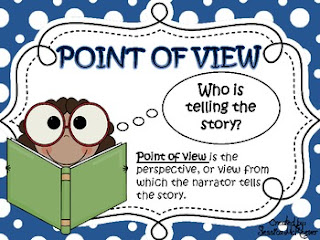One of the most frequent mistakes newbie writers make is switching the POV (POV = point of view).
They tend to start the scene from the point of view of one character, then suddenly switch to another character, then switch back, and forth, and so on and on.
Example:
Gary snatched his mobile and dialed Alex. It couldn’t be true, he was certain, yet he needed to hear it from Alexander, his friend of forty years. It’s not him, he was thinking, counting the seconds. It’s not him.
But as he heard Alex’s hoarse “Yes,” Gary hung up the phone.
Alexander stared at the screen of his cell phone. It was Gary calling.
Has anything happened? he wondered, hitting Gary’s number on the quick dial. After almost a minute he had to disconnect. Gary didn’t answer. Staring at the screen of his phone with Alexander’s name flashing across it, he was shaking with anger, with despair and fear.
Why, Alex? he thought. Why?
We are with Gary in the beginning; we know
what’s going on in his head; we see he has a problem. Then we switch to
Alex, who is confused and wants to reach Gary on the phone. Then we go
back to Gary again. I can assume that in a second we’ll be back with
Alex. While a POV switch is not a big crime, it irks the reader. You
only need to take a look at negative reviews to see that most of the
time they refer to bad editing, silly storyline, or POV switches.
Today’s reader wants to stick with one character throughout one scene.
It’s alright to tell the story using the POV of different characters,
but they will need their separate chapters.
However, you should not confuse limited
POV with unlimited POV. The first is when the story is told from just
one character’s POV. This can be done with first person narrative (I woke up to the warbling of nightingales. Was it possible? I went to bed in winter, but I sensed spring behind my window. How sweet, I thought. How fortunate.). Or with third person narrative (She was alone again, abandoned and friendless, her stomach a pit of emptiness, ready to consume anything edible or not. I am still alive, she thought. That’s what counts.).
Unlimited POV is when the narrative is not limited to one character: Rose
was tired, but Kyle kept walking. Her legs were weary; his hadn’t lost
half the strength. She was on the verge of crying, but he was determined
to reach the base before the sunset. He couldn’t otherwise. Staying
outside was perilous. Rose knew that too, but her body didn’t care. It
needed rest.
This chapter has unlimited POV, meaning
that we see what’s happening to Rose and Kyle at the same time, what
they are thinking about, what they want. This is a dangerous route for
newbie authors. And we reach an important question here:
Which POV to choose?
I advise the newbie authors to stick to
limited POVs. It can be first person narrative or third person
narrative, but let the POV be limited, i.e. we see the story through the
eyes of one character at a time. If it’s a first POV narrative, then we
will be in that character’s head throughout the whole book. But with a
third person narrative you can let us see the story through the eyes of
more than one character, at the same time you won’t make the mistake of
abruptly switching the POVs, which irritates so many readers.
Also, limited POV lets you avoid very
short explanatory chapters, when you take us into a secondary
character’s head, because you need to clarify things for your reader.
But because the character is secondary, you don’t have much to tell your
reader and the chapter ends up short and awkward. This might be a bit
challenging, as you’ll need to make the things clear through your one or
two major characters, but it’s worth it, because your story will be
solid, clear, and tidy.

No comments:
Post a Comment